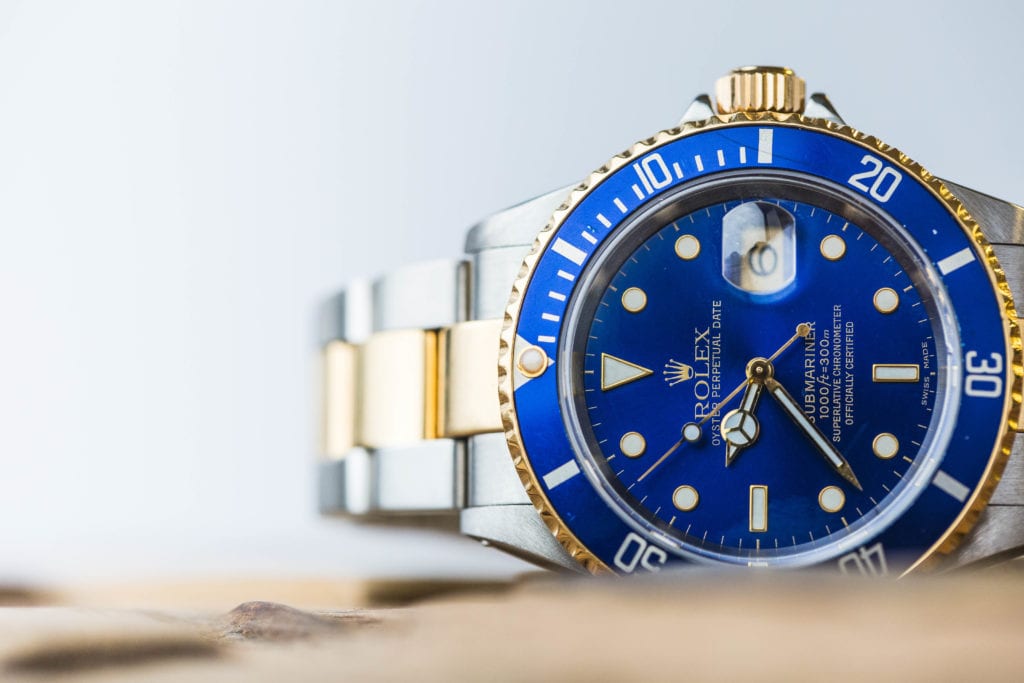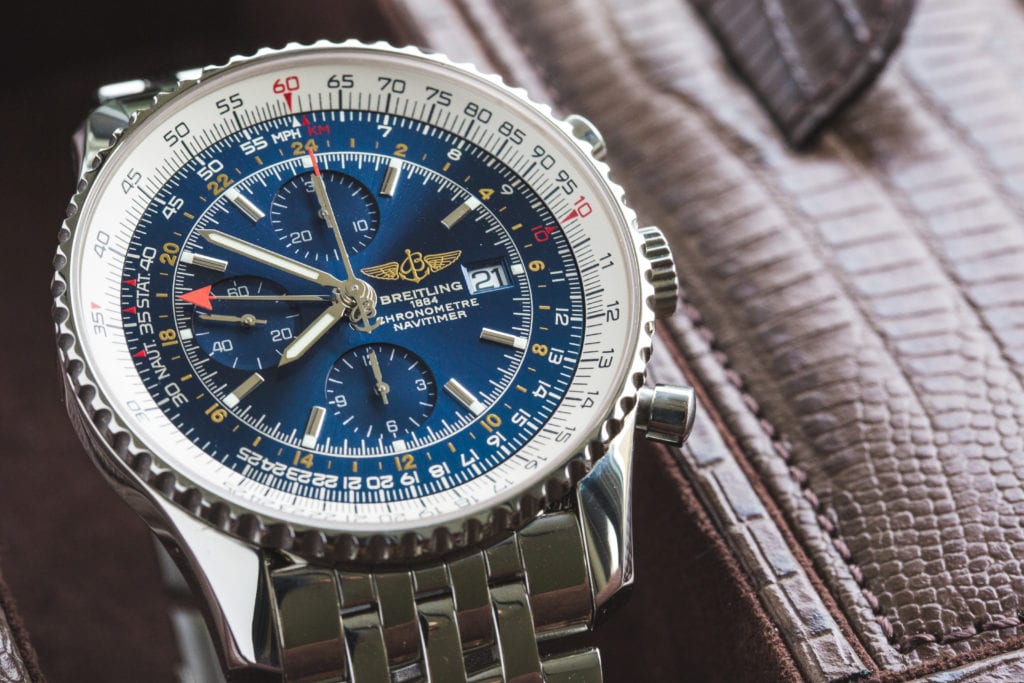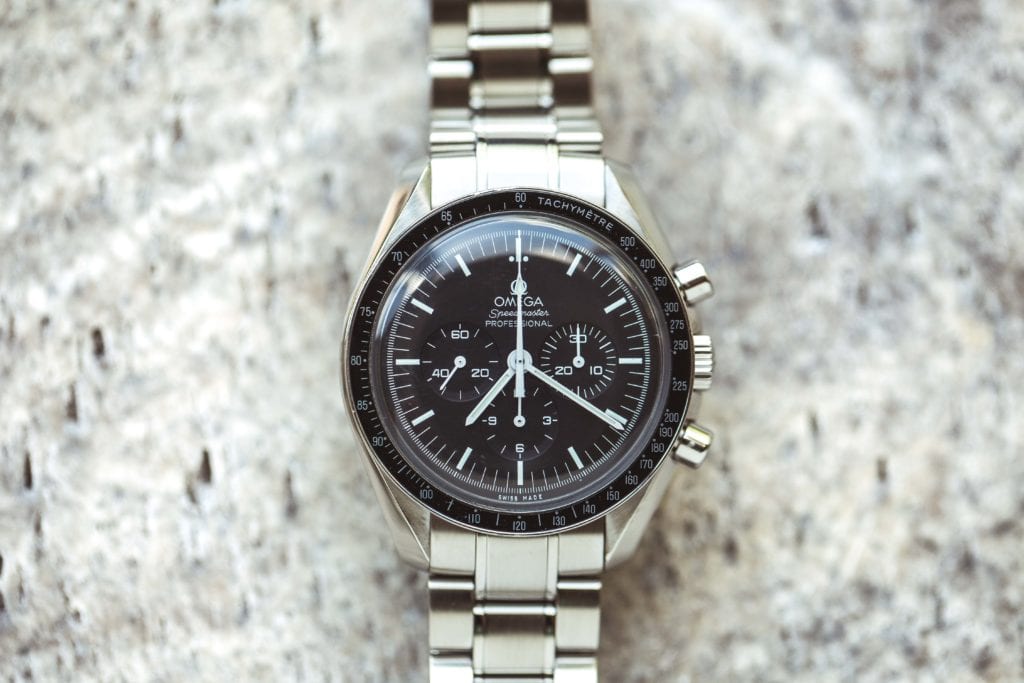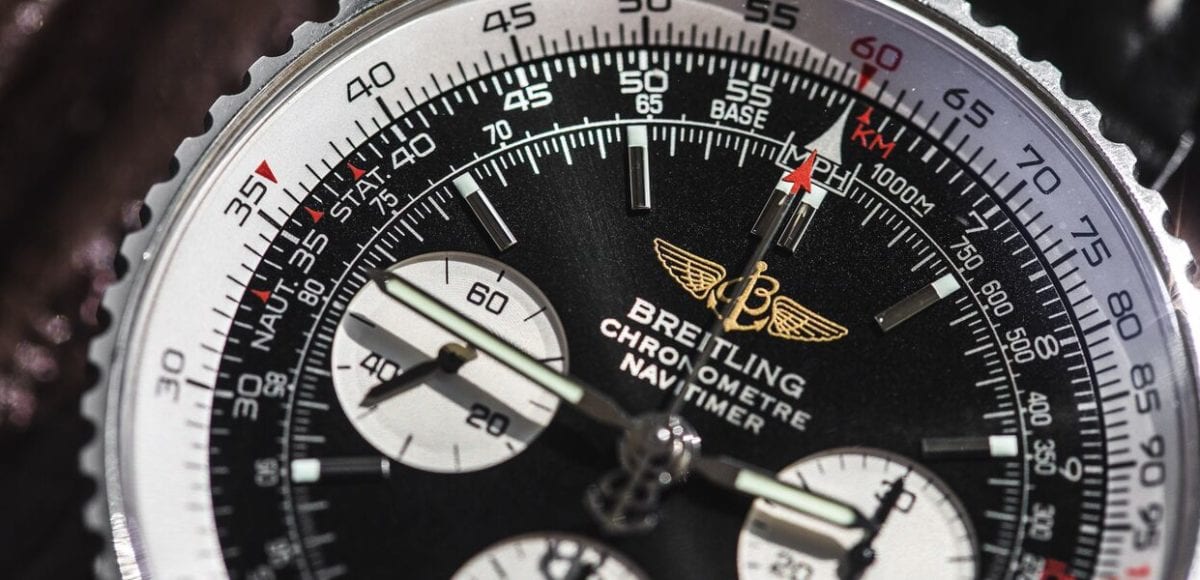Breaking Down Bezel Forms and Functions
A watch bezel is the ring that frames and helps secure the watch crystal. Bezels can be functional for activities like diving or for timing a race. They can also be purely decorative and simply add a bit of texture or flair to your timepiece. The bezel is a relatively simple tool once you know how to use it. However, bezel scales can look fairly complex and intimidating at first glance. Here, we’ve compiled several of the most common types of utilitarian bezels. We’ve outlined how to operate them as well as some key details about each.
Countdown
A countdown bezel typically features a graduated 60-minute scale that reads counterclockwise or that “counts down” from 60 to zero. This allows the wearer to measure the time remaining in an event, such as a race. Countdown bezels are usually bidirectional. As a result, you’ll most often find them on pilot watches or military watches as opposed to dive watches. For example, in military application, a countdown bezel might help to count down the launch of a missile. To use a countdown bezel, simply twist the bezel so that the time remaining until the start of the event aligns with the minute hand. Then, once the minute hand reaches zero, the countdown is complete.
Count-Up (or Diving)

A count-up bezel, also known as a diving bezel, helps to measure elapsed time. As opposed to the countdown bezel, the scale of a count-up bezel goes from zero to 60. Also in contrast to the countdown bezel, the count-up bezel is unidirectional. As the name suggests, this type of bezel is most often on sport watches and dive watches. In fact, most count-up bezels comply with ISO standards for dive watches. This requirement states that a certified dive watch must be equipped with a unidirectional bezel featuring a 60-minute scale. In addition, it must have markings at least every five minutes and a zero marker to denote a specific minute reading. This usually appears in the shape of a triangle. Many dive watch bezels go beyond the ISO regulations and feature one-minute markings from zero to fifteen. Over the years, this has become a standard among popular dive watch models, like the Rolex Submariner. The process of using a count-up bezel is relatively similar to using a countdown. Start by rotating the bezel so the zero marker aligns with the minute hand. As the minute hand advances, you can read the elapsed time.
GMT (or Dual Time)

A GMT or dual time bezel allows you to read the time in multiple time zones. The bezel features a twenty-four-hour track and zero marker, typically in the shape of a triangle, similar to the count-up. In addition, the watch itself comes equipped with a fourth, twenty-four-hour or GMT hand. To operate a GMT bezel, simply turn the bezel until the zero marker lines up with the twelve-o’clock position. Next, use the crown to set the GMT hand by aligning the hand with the desired time on the bezel. Of course, one of the most famous watches featuring a GMT bezel is the Rolex GMT Master.
Pulsometer
The bezels we’ve discussed so far are relatively mainstream. In contrast, the pulsometer is a less common type of bezel. The design is somewhat similar to a tachymeter (which we’ll touch on later in this article). However, instead of tracing units per hour, it helps you determine heart rate, as the name indicates. The pulsometer scale is calibrated from fifteen to 30 pulses and works in tandem with a chronograph. To use a pulsometer, start by engaging the chronograph function. Then, count the beats that correspond to the calibrated pulses. Finally, note the position of the seconds hand on the outer scale to determine the heart rate in beats per minute. One of the most notable examples of this type of bezel is the Omega Speedmaster Pulsometer, Reference CK2998. This model was the first Omega in space, worn by astronaut Wally Schirra during the 1962 Mercury Signma 7 mission.
Slide Rule

The slide rule is quite possibly the most intimidating of all the bezels. This complex tool is comprised of an inner and outer bezel. It allows you to perform an array of calculations, like speed, distance, and flight time. One of the first models to feature the slide rule was the Breitling Navitimer. Early slide rule bezels were optimized for pilots and featured three important units: KM (kilometers), NAUT (nautical miles), and STAT (standard mileage). With modern flight tools, the need for the slide rule bezel is becoming more and more obsolete.
Tachymeter

A tachymeter is another common type of bezel. It allows you to measure the speed based on the amount of time traveled at a given distance. In short, it helps you calculate speed over a fixed distance or units per hour. While a number of the other bezels we’ve discussed rotate, a tachymeter is fixed. Similar to the pulsometer, you use it in conjunction with a chronograph. This allows you to convert elapsed time in seconds to speed for events lasting up to 60 seconds. Here’s an example of how to use a tachymeter. Say you’re measuring a car’s speed in a race that’s one kilometer. Engage the chronograph once the car crosses the starting line. Then, stop the chronograph when the car completes the one-kilometer lap. Finally, read the mark on the bezel that lines up with the chronograph seconds hand to obtain the car’s speed. The first watch to feature a tachymeter scale on the bezel instead of the dial was none other than the Omega Speedmaster.
Telemeter
A telemeter bezel is similar to a tachymeter. However, instead of calculating speed, it calculates distance. This type of bezel was originally created to help soldiers calculate the distance of enemy fire. Today, it’s used for more routine events, like determining the distance of a lightning strike. Like several other bezels we’ve discussed, a telemeter bezel operates in tandem with a chronograph. In the example of a thunderstorm, you would start the chronograph function when you see the lightning strike. Then, you would stop it when you heard the thunder that follows. With the telemeter scale, you can calculate the distance based on the time.
Get More Articles Like This in Your Inbox
We're constantly creating great content like this. So, why not get it delivered directly to your inbox? By subscribing you agree to our Privacy Policy but you can unsubscribe at any time.






